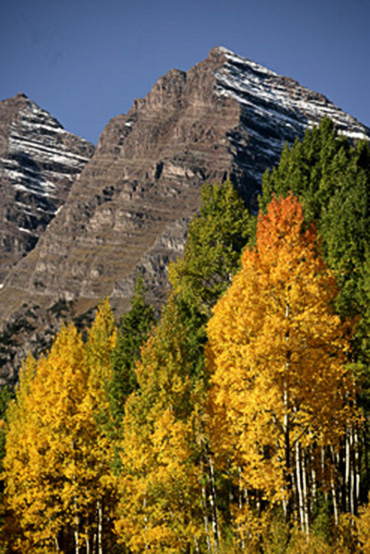
Learning about a location, as with Maroon Bells in Colorado, will let you know if morning or evening light is better for any given spot.
“Research,” “study” – in school (especially college) these words meant a lot of work. When those days were over, you probably thought the grind was finished. Then you picked up a camera and made wildlife and nature photography a part of your life. Suddenly, research and study came back into play in a big way, but you’re finding the work more enjoyable this time. Just when you thought you were finished being a student, the experience starts all over again.
The scope of research and study related to nature photography can be broken down into a variety of categories, but the focus here will be on two: equipment and subject. Many of the principles found in one can be applied to the other. In fact, if you think about the relationships hard enough, you’ll be able to extend the principles to even more aspects of photography.
EQUIPMENT AND YOU–CAN BE A LOVE / HATE RELATIONSHIP
When you need to determine which equipment to buy to suit the type of photography you’re planning to do, you’re ready to begin research. I’ve seen people go through two or three tripods and multiple lenses before they settled on the items that were adequate for their needs. Photography equipment can be quite expensive, so you want to spend enough to satisfy your requirements. However, no one wants to waste money purchasing items that don’t work out.
This is one time when you’ll want to consult other photographers, especially those who spend a lot of time in the field. Simple questions posed to people who are experienced, as well as internet research, can help eliminate a lot of problems later. The best advice I can offer is don’t scrimp on a tripod after you’ve spent a lot of money on a camera body and lens. A weak tripod/head combination will take away from the sharp images you desire.
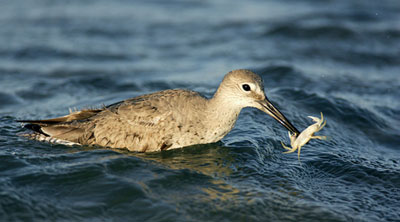
The right equipment will give you clear photos and with the study of this Willet’s behavior, you can learn when it is about to strike for a meal.
If you’re wondering where studying comes into the equipment picture, just look at your camera. You’re forced to do plenty of studying if you want to figure out how to use all the features on a modern camera to their best advantage. If wildlife photography is your main interest, experiment with the features that help with this – motor drive, continuous focus, expanded focus points and other items. Each new generation of camera offers new functions you need to explore to see what applies to any given photographic style. For example, the advent of movie capture on the higher end camera bodies brings a whole new learning curve to the equation. You’ll need to concentrate on knowing how and when to change the primary focus square on the fly as fast as possible. Rarely do you want to keep the focus point locked onto the middle square. Depending on the direction the animal is moving and its position, being able to change the focus point quickly can mean getting a great photo or missing the action altogether.
Most photographers don’t have the luxury of spending thousands and thousands of dollars on expensive prime lenses such as the 600mm f/4, 400 f/2.8 and 500 f/4.5. If you’re really serious about wildlife photography and want to splurge on one good lens, the 500mm f/4.5 would be a perfect choice. It provides good focal length, a teleconverter can be used nicely on it, and if you expend a little effort searching the camera stores that excel at selling used equipment, you can purchase a good used one for a reasonable price. For Nikon users who have a bit of money to spend, the 200-400 f/4 is one of the best lenses on the market. For Canon users on a budget, the 100-400mm lens is very versatile for wildlife.
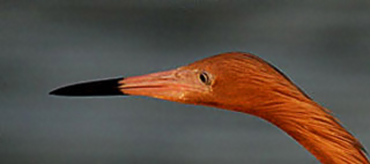
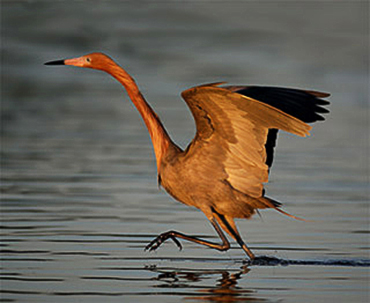
This image combined not only a good camera and accessories, but research on both the time of day the sun would set and when low tide was going to occur.
All of this set me up for capturing this Reddish Egret as it danced around for a meal in the early evening light.
SUBJECT: NATURE AND WILDLIFE
The biggest part of your research and study in the art of photography will inevitably involve the subject, no matter what it is. For me, selecting a subject is the most fun part of photography, other than capturing the peak action of wildlife behavior. Without research and study, you’ll miss many great wildlife images. You’ll also find that some of your landscape photos won’t have enough dramatic impact because you didn’t study the light well enough to know what to do with it.
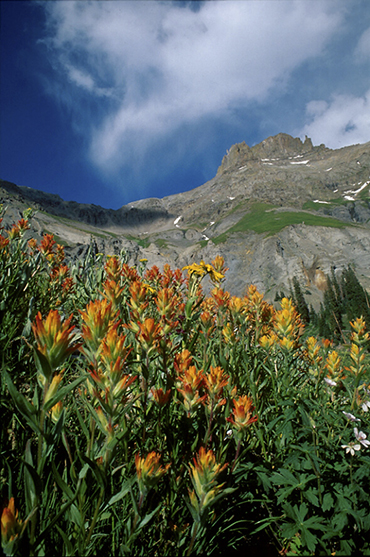
Do some research on an area so you can plan ahead. Here it is prime wildflower season at Yankee Boy Basin in Colorado.
Research is more of a before-the-fact action and can be accomplished through many platforms: talking with other photographers (check out a camera club in your area), visiting the library, searching the web, taking classes or workshops, and going out into the field to observe. Those bad weather days can be great when it comes to wildlife research, as they allow you the time to sit and watch behavior. For me, knowing what happens after a particular action helps me to make great images. Since birds are a favorite subject of mine, I take time to learn key patterns I can look for in anticipation of a desired action. For example, on my visits to Florida, I have had opportunities for photographs taken of gulls and skimmers either doing a wing flap in the water or just taking off out of the water because I knew their morning behavior. (Both of these birds spend the night in the water very near the shore, so I would suggest getting out early in the morning to watch their behavior for yourself and then be prepared and able to create some great images of them in action.
TIP: To get ready for a day of activity, an individual bird will move away from the crowd to do some bathing. The big key is a three dip sequence where the bird will do a wing flap and, more than likely, a short flight back to the flock of other birds, making for a very nice flight take-off image.
So whether you’re with a group or doing research on your own, you’ll gain knowledge and be able to anticipate what action lies ahead. No matter which animal you like to photograph, you can learn something from observing it that will help you get a shot later on.
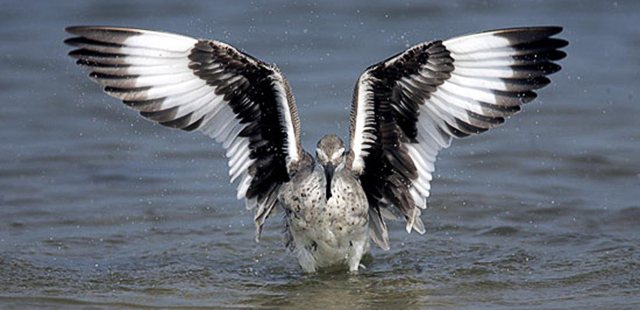
Almost every time a bird is doing a morning bathe, such as this Willet, it does a nice wing flap after three quick dips into the water.
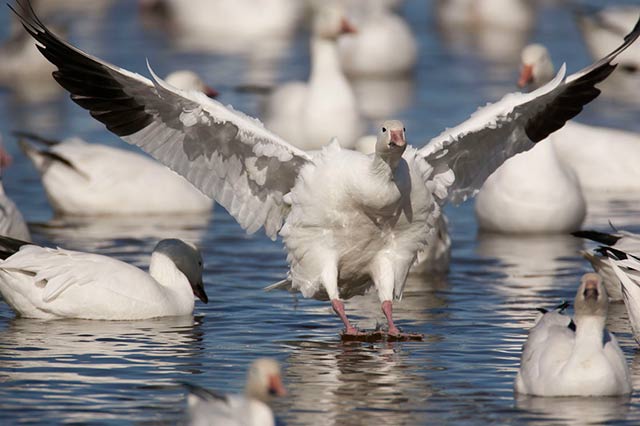
Watch the bird’s habits and your
timing will pay off as with this Snow Goose landing on the water.
Another side of nature and wildlife research involves finding the right places to go to get great photos. Workshop companies (and there are plenty out there to look at) have listings in magazines and on the internet showing the locations of upcoming trips. These listings are a great resource for searching out destinations that will be productive, because no workshop leader is going to set up a trip to a place that won’t produce good results for their attendees.
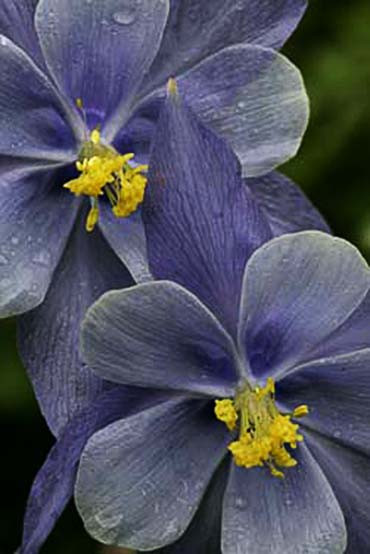
Looking to photograph a particular subject or go to a particular location? Looking at workshop schedules from multiple outfits can show you when peak seasons usually occur during the year, such as for wildflowers.
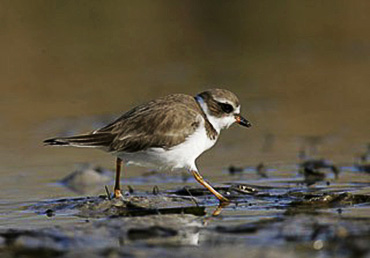
Low tide is when the small shorebirds such as Plovers are active in the flats.
by Andy Long
First Light Photo Workshops
All text & photos: © 2010 Andy Long. All rights reserved.

Leave a Reply